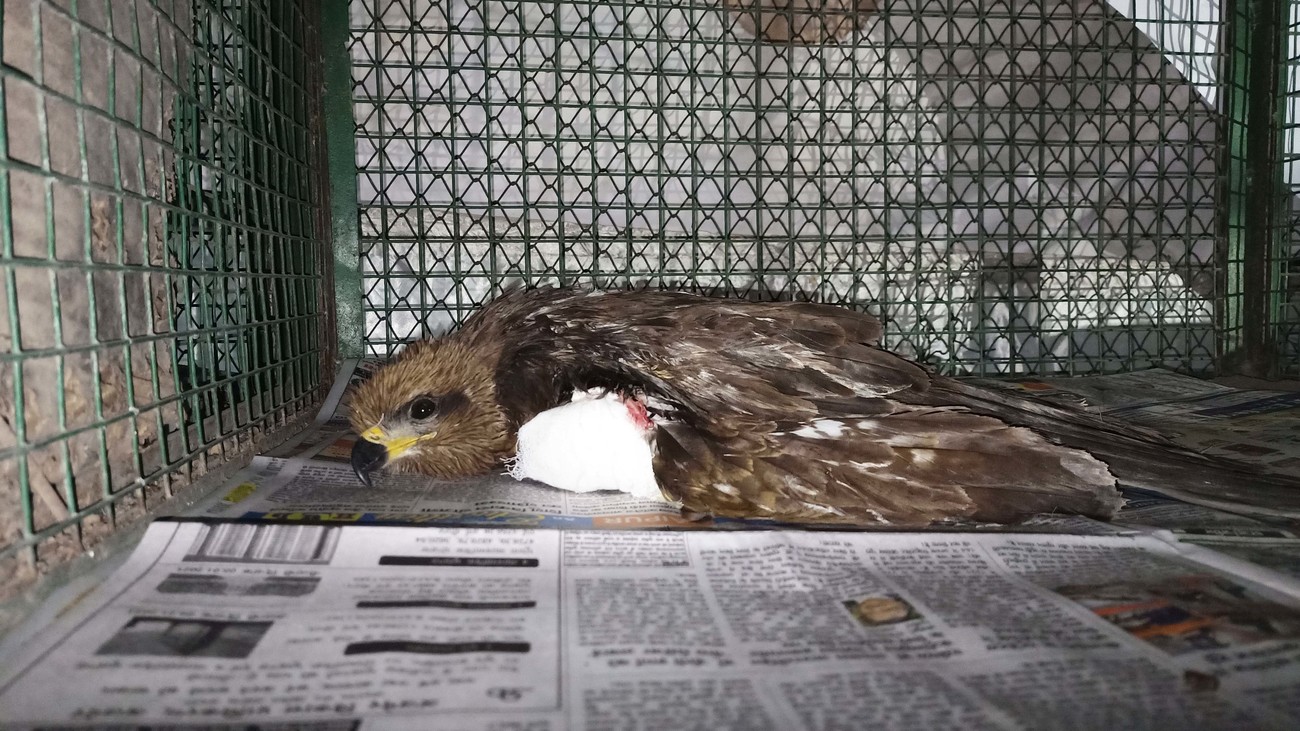Updates
Relief and recovery for animals and people in Myanmar
Read moreIFAW-WTI rescues birds injured during India’s Kite Flying Festival

Makar Sankranti is one of the biggest festivals in India. Observed on January 14th, the holiday marks the beginning of the spring solstice and is celebrated largely by worshipping the Sun and celebrating the winter harvest of crops. The western states of Gujarat and Rajasthan rejoice by flying vibrant colored kites, an activity that cuts across all social strata. With the objective of cutting the opponent’s kite, people resort to using sharp nylon kite strings called manja, made lethal by an abrasive, glass coating. The revelry usually turns into stiff competition when kite fliers use their manja to cut as many kites as they can come across and be the last kite flying. In 2017, India banned the use of nylon manja due to the devastating impact it has on wildlife, specifically the thousands of birds who are injured every year.
IFAW and our partner Wildlife Trust of India have been involved in mitigating the threats to wildlife during Makar Sankranti - the Kite Festival since 2013. The IFAW-WTI Emergency Relief Network consists of animal rescue and rehabilitation members throughout the country who use their expertise to rescue animals in crisis. In preparation for this year’s festivities, our teams worked with the Forest Department to set up veterinary camps across the cities of Jaipur in Rajasthan and Bhavnagar, Rajkot, and Porbandar in Gujarat. Due to the COVID-19 outbreak and Avian Influenza, we followed strict biosecurity protocols and limited the number of veterinarians caring for injured birds inside the stations. Common injuries resulting from interaction with strings, manja, or the kites include broken wings, lacerations, blunt force trauma, feather damage/loss, and broken beaks. Thanks to stricter enforcement of the manja ban, fewer people were flying kites with the deadly string. In total, we rescued 885 birds: 665 pigeons, the rest a mix of wild birds including owls, black kites, raptors, cormorants, spotted eagles, cranes, and flamingos. Local ERN member organizations continue to rehabilitate 20 birds so they too can be released back to the wild where they belong. Of the total 885 birds, more than 60% were released back to the wild, while a handful of birds had to be resigned to a lifetime care facility.
Every problem has a solution, every solution needs support.
The problems we face are urgent, complicated, and resistant to change. Real solutions demand creativity, hard work and involvement from people like you.
Unfortunately, the browser you use is outdated and does not allow you to display the site correctly. Please install any of the modern browsers, for example:
Google Chrome Firefox Safari